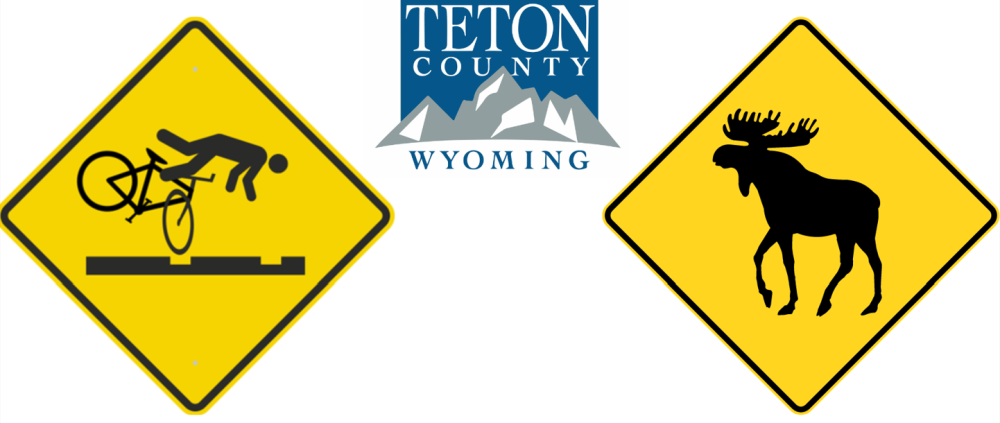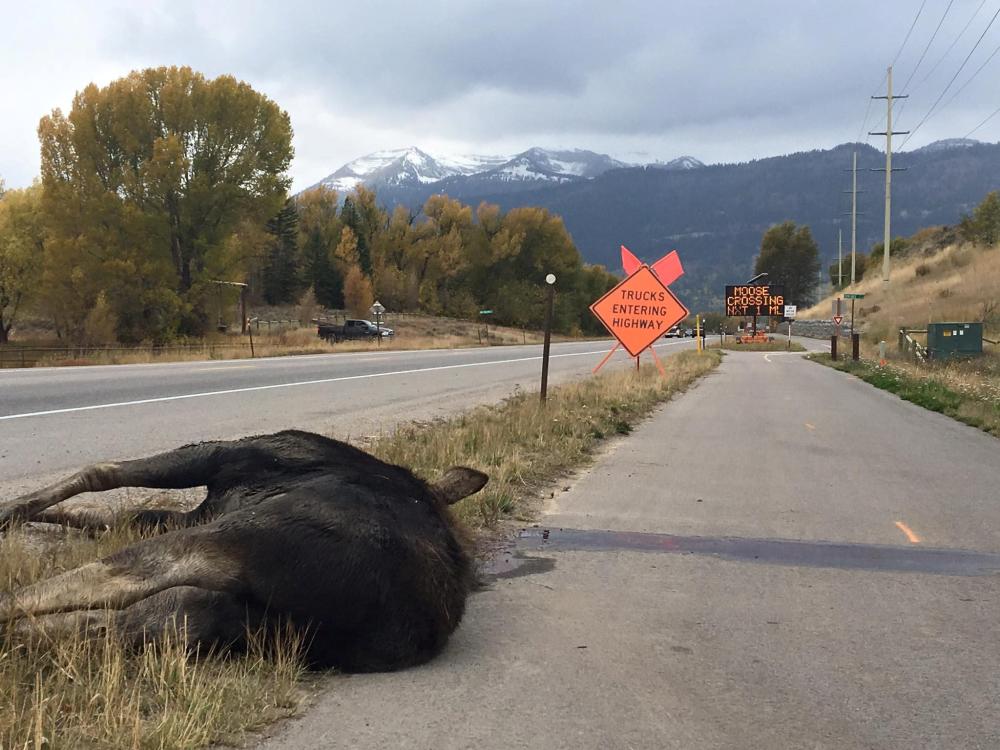Wildlife Crossings Cattleguard
Wildlife Crossings Cattleguard
The Wilson-Stilson Pathway and HWY22 cross both the Snake River riparian corridor and critical wildlife habitat.
That can mean wildlife-vehicle collisions, particularly for moose.
For pathways users and wildlife to safely navigate this corridor, Teton County is testing a WILDLIFE GUARD and needs your feedback on the experience.
We are looking for solutions and before we install additional wildlife guards, we need your thoughts.
Please complete our survey so we can all help minimize wildlife-human conflicts.

Wildlife diversion fence is an integral component of a wildlife crossing mitigation system. Fencing directs wildlife to safe passage opportunities under the highway and prevents animals from crossing the roadway at-grade, thereby reducing the risk of wildlife vehicle collisions.
Specialized wildlife guards at this location on our pathway system help prevent animals from entering the fenced road right-of-way. These guards are an important component of the wildlife fence.
Wildlife crossings have been provided at this location because this has traditionally been a hotspot for wildlife vehicle collisions, particularly for moose. This location is in critical habitat for wildlife and in the intact riparian corridor of the Snake River, that many species use as a movement corridor between summer and winter ranges.
The design of this project could not prevent the pathway alignment from going from within to outside of the right-of-way and wildlife fence. In locations where the pathway goes through the wildlife fencing, wildlife movement into the right-of-way, where they might be involved in a collision, must be prevented by one of these available tools: wildlife guards, cattle guards, or pedestrian gates.
This design of a wildlife guard is meant to provide the least disruption to human travel on the pathway system, as an alternative to cattle guards that are potentially dangerous to cyclists and other pedestrians.
Why Wildlife Guards?

Wildlife guards have several advantages over double cattle guards for inhibiting ungulate (e.g., deer, moose, and elk) breaches into a fenced highway corridor:
- Double cattle guards include two concrete, box frames, constituting the sides and center of the structure. Ungulates may breach a double cattle guard by jumping half-way across the guard onto the center, concrete framing before jumping the remaining distance across the guard. Wildlife guards are a single unit without any central framing, thereby eliminating this breach possibility.
- Wildlife guards also eliminate the concrete framing on the sides of a cattle guard. While typically only 1-2 inches wide, ungulates may walk along this edge to breach the guard.
- The wings on the sides of a double cattle guard are designed to impede cattle and are not effective for ungulates. A wildlife guard has exclusionary fence tightly tied into the sides of the guard that prevents breaches along the sides.
Please let the County know your thoughts on these wildlife guards.